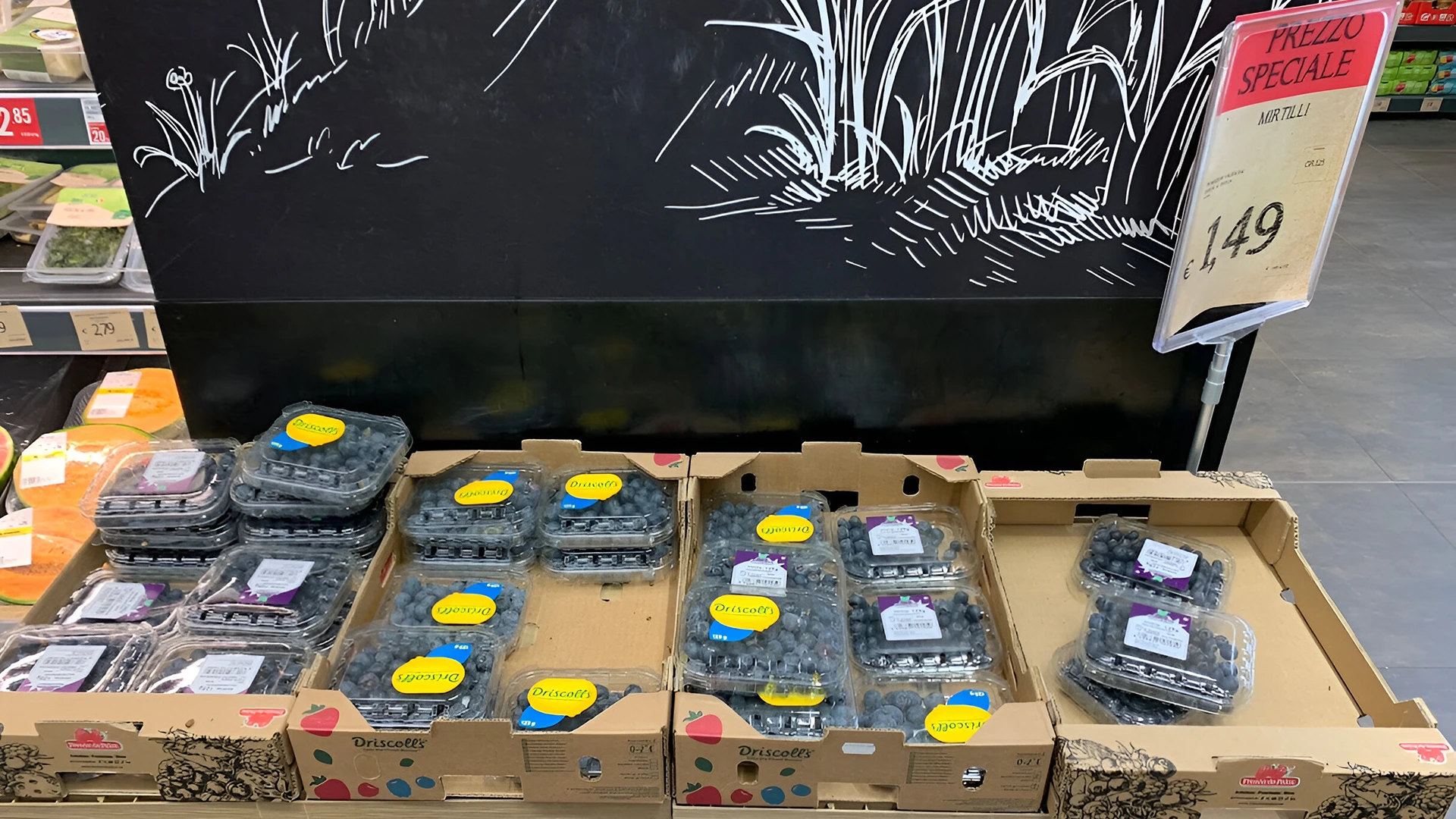Hort Innovation Australia collects industry income data on Australian berry crops-strawberries, blueberries and rubus type berries (raspberries and blackberries).

It has not yet released the numbers for the last financial year, but trends suggest that the domestic crop of blueberries is on track to overtake strawberries in production value after nearly tripling in value since 2013.
Costa Australia, the country's largest berry producer, increased its tonnage of blueberries by 23.9 per cent in the first half of 2021 compared to 2020, while strawberry tonnage fell by 6 per cent.
However, blueberries grower and trader Josh McGuiness said he does not expect them to overtake strawberries any time soon. He cites the dominance of retail strawberries and a difficult season for farmers. "This year has been particularly difficult for blueberries growers on the east coast; we are down 30 per cent in tonnes compared to last year."
Whether or not blueberries takes the crown, the trend is undeniable and the race for Australia's most precious berry has begun. Every year, strawberries are bought more often and by more households than any other berry in Australia. This trend is consistent on an annual basis, but is no longer consistent from month to month.
"Inthe next few weeks, blueberries will become the number one berry in Australia as strawberries start to slow down for Queensland growers," Mr McGuiness said. "It will last eight to 12 weeks from now until November/December."
He said he has seen this pattern for two years, driven by anample supply of blueberries that coincides with a break in strawberries during the spring and summer. "Right now, blueberries are at their peak, so we are seeing good supply and value for our customers," said a Woolworths spokesman.
Australia's berry harvests and retail markets are closely linked because berries are so difficult to import . "There is a small period in January/February when we import blueberries from New Zealand, but within 10 years I suspect this window will close considerably because retailers and consumers prefer to grow locally," Mr McGuiness said.
"STRAWBERRIES DON'T EXPORT VERY WELL AND THEY DON'T IMPORT VERY WELL - THEY HAVE ABOUT HALF THE SHELF LIFE OF BLUEBERRIES".
The rise of blueberries did not come out of nowhere - it followed significant investment and work on their breeding and cultivation in Australia. Peter McPherson has been growing berries for more than 30 years. He now chairs Berries Australia and is head of Costa's berry division.

Peter McPherson says production costs will always be the Achilles heel of Australian growers.(ABC: Alex Blucher)
"IN AUSTRALIA WE CAN GROW BLUEBERRIES 52 WEEKS A YEAR, FRESH. I THINK WE WERE THE FIRST [COUNTRY TO DO IT]."
The year-roundblueberries supply of came about last decade just as the genetics of blueberries and growing practices were being improved. This perfect storm of investment and effort, led by Australian growers, is why blueberries are tastier and cheaper than ever.
As the International Blueberry Organisation (IBO) said in its 2021 report, "what Australia lacks in volume at blueberries, it makes up for with its contribution to innovation in the sector globally, [helping] to fuel the exponential increase in low-temperature genetics around the world".
The area under blueberry in Australia has more than tripled in the last decade. The blueberries are now bigger, sweeter, crisper and longer lasting thanks to this genetic investment. This has led Australians to buy blueberries as a snack fruit, not just as an ingredient, and in larger quantities. "The 125 gram baskets are too small for a standard family," Mr McGuiness said. "On the east coast, Coles, Aldi and Woolworths all have a 300 gram basket now, and in Victoria they have a 170 gram basket."








